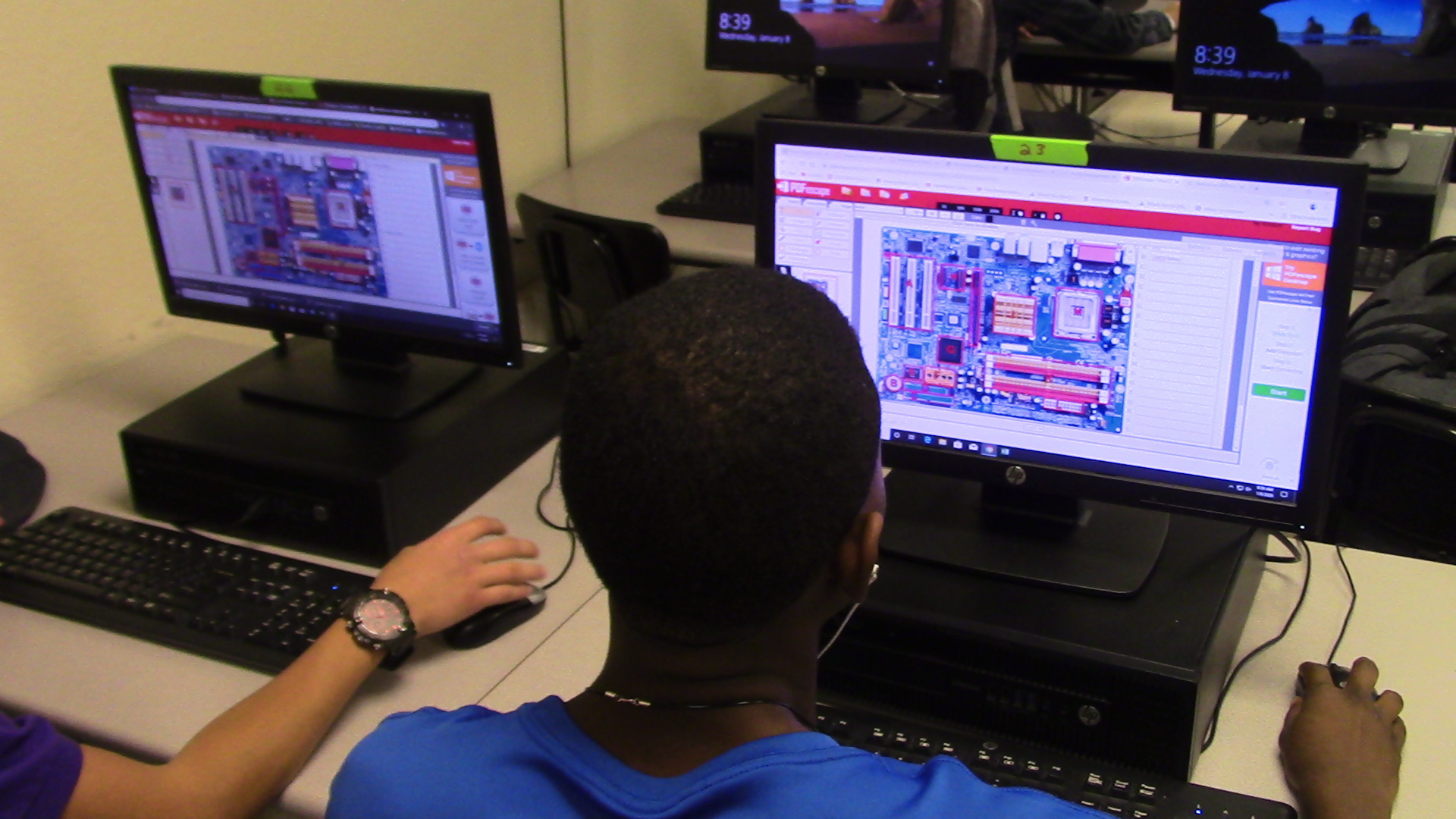San Marcos Consolidated ISD sits on an innovation corridor between the big cities of San Antonio and Austin, where Oracle, Tesla and other tech giants are opening new facilities.
The district has responded to the growing need for skilled STEM workers with a computer science and digital forensics pathway, and next-gen automotive tech and engineering programs, says Mike Doyle, San Marcos CISD’s CTE director.
“Once students succeed through our programs, not only are they prepared with an understanding of what careers they want to go into, they also understand what additional education is required,” Doyle says. “They have an understanding of how to maneuver through this world.”
A grant has allowed the district to begin career prep work as early as elementary schools.
CTE staff are training elementary teachers to blend coding, computational thinking and related STEM skills into their instruction, Doyle says.
“Students are not going to a computer science class,” Doyle says. “We’re embedding it throughout all elementary classes.”
Starting in sixth grade and throughout high school, students can begin to take more specialized classes aligned with specific tech sectors. Along with preparing students for careers, San Marcos CISD leaders hope to diversify the STEM field, Doyle says.

“We’ve found that exposing students to computer science at a younger age helps them understand that’s it not impossible, that it’s for everybody, that regardless of who you are, there is a career out there for you,” he says.
‘Soft skills’ are ‘critical skills’
CTE pathways in the Charleston County School District in South Carolina follow three priorities: academic achievement, technical training and employability.
That final component covers skills such as collaboration, decision-making, respecting co-workers and showing up on time, says Rich Gordon, the district’s executive director of career and technology education.
“I don’t like to call them ‘soft skills’ because these are critical skills students can practice and learn,” Gordon says.
The district has collaborated with local industry leaders, such as Boeing, Bosch and the healthcare sector, to create a CTE program that prepares students for high-skilled, high-demand, high-wage careers in the region’s workforce, Gordon says.
Boeing, for instance, builds the 787 Dreamliner commercial jumbo jet in a North Charleston plant, he says.
To expand access to CTE programs, the district recently opened its first regional Center for Advanced Studies to serve students from multiple high schools. It plans to open a second facility in the near future.
Students are transported from their home schools to one of the centers during the school day for biomedical, automotive technology, robotics and other advanced, hands-on courses in makerspaces and state-of-the-art labs.
The corporations also provide subject matter experts and mentors as a form of professional development, to help teachers design and deliver CTE curriculum.
Gordon and his team actively seek out business partners to participate in the program, though employers also reach out to the district to get involved with students.
District leaders rely on teachers, counselors and parents to encourage students to enroll in the CTE programs, Gordon says.
Counselors, for instance, meet with students individually to develop graduation plans that include helping learners focus on areas of interest that could lead to high-demand careers, he says.
More from DA: 5 guidelines for making CTE work for COVID recovery









